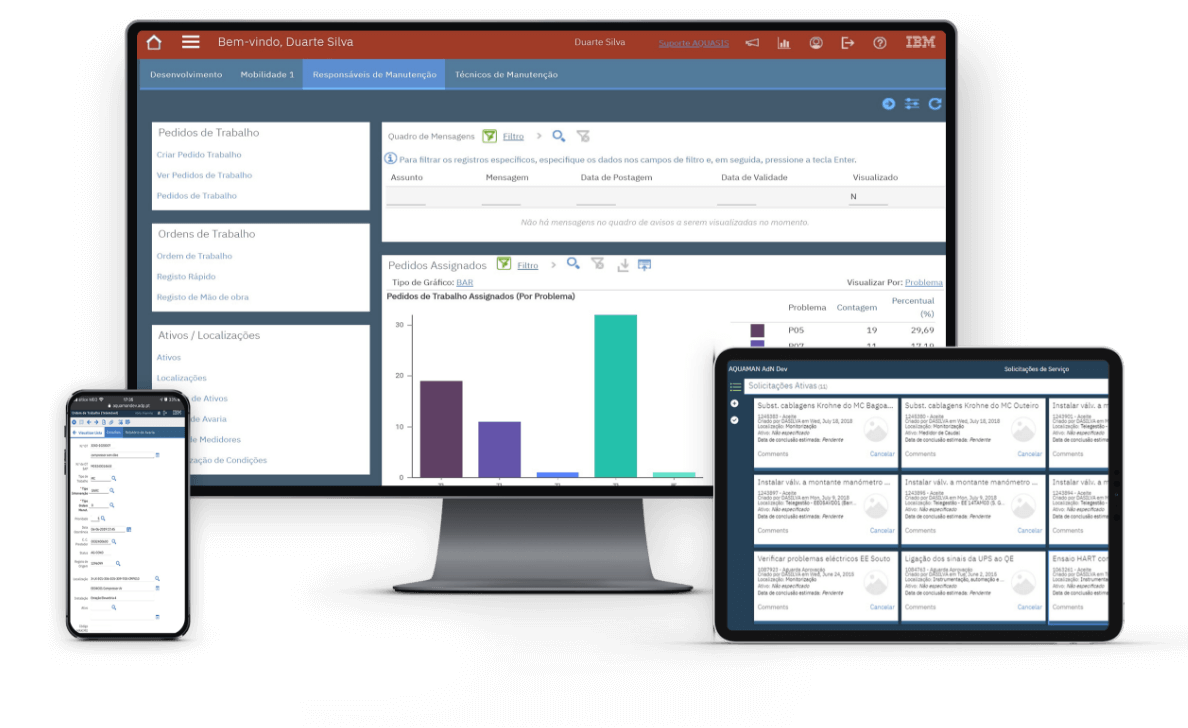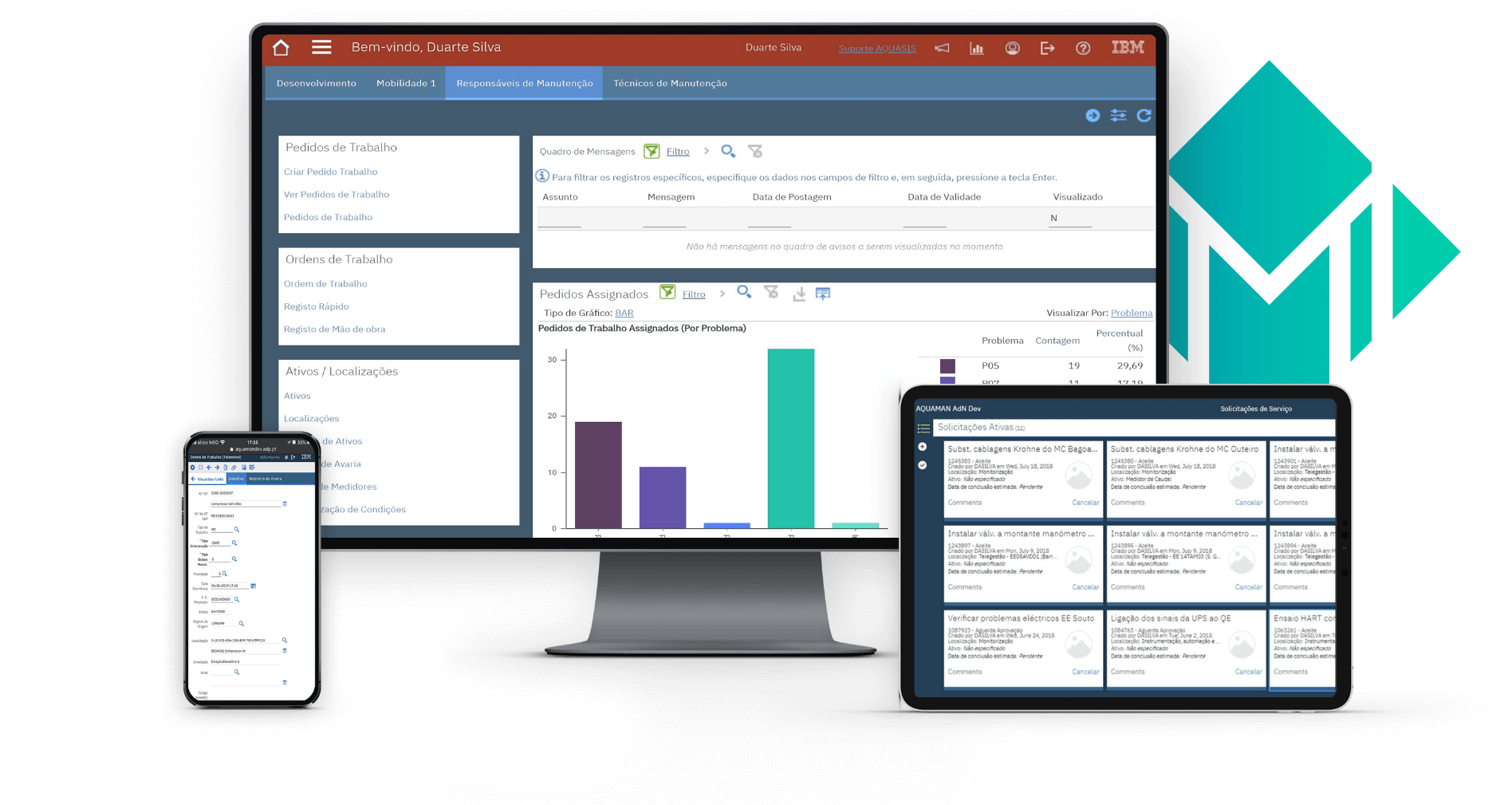
Integrated Asset and Maintenance Management
How it works?
Goals
- Operational and functional organization of all infrastructures - Data Systematization - Development of an analytical framework - Inventory of objects targeted for maintenance - Warehouse management - Reducing costs and improving ROA (Return on Assets) and OEE (Operating Equipment Efficiency) - Organization of procedures and work orders
Mobility - Processes
- Planning (Scheduler), with visualization of your service orders and planned activities for the assets - Work order lifecycle management - Mobile service centers for managing Inventory, Assets, Inspections, Requests and Service Orders - Production of indicators (KPI) - Georeferencing of Locations / Assets / Services - Production of reports (surveys) - Analytics - Service Center - Service orders - Purchases - Inventory - Contracts - Planning - Preventive Maintenance - Building Information Models (BIM) - Work centers - Mobility (Phone and Tablet) - Integration



